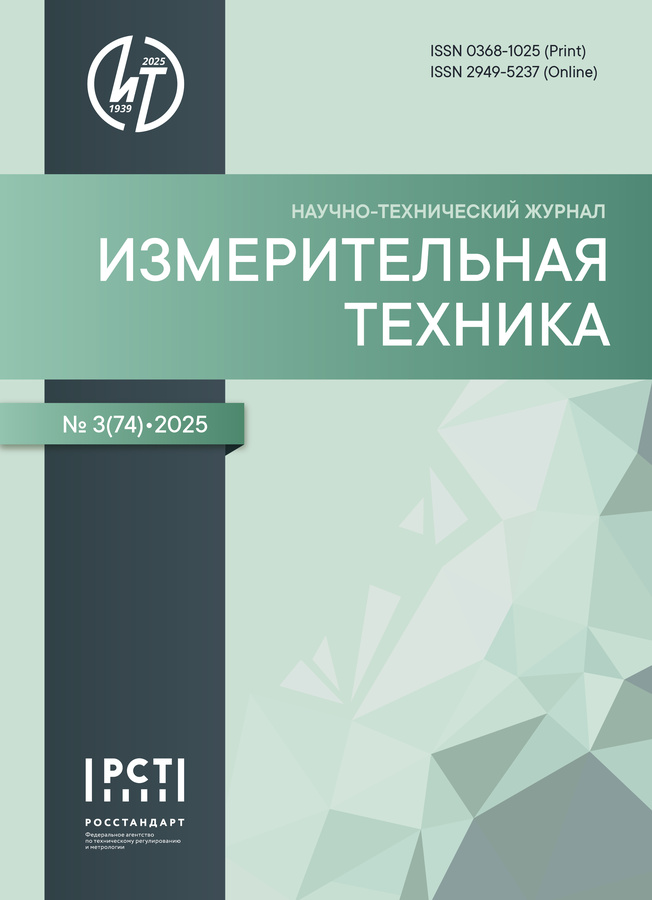Method of voice source coding with data compression based on the linear prediction model
- 作者: Savchenko V.V.1, Savchenko L.V.1
-
隶属关系:
- National Research University Higher School of Economics
- 期: 卷 74, 编号 3 (2025)
- 页面: 67-78
- 栏目: ACOUSTIC MEASUREMENTS
- URL: https://journal-vniispk.ru/0368-1025/article/view/351190
- ID: 351190
如何引用文章
详细
作者简介
V. Savchenko
National Research University Higher School of Economics
Email: vvsavchenko@yandex.ru
ORCID iD: 0000-0003-3045-3337
L. Savchenko
National Research University Higher School of Economics
Email: vvsavchenko@yandex.ru
ORCID iD: 0000-0002-2776-5471
参考
Rabiner L. R., Shafer R. W. Theory and Applications of Digital Speech Processing. Pearson, Boston (2010). Li Y., Tao J., Erickson D., Liu B. and Akagi M. F0-Noise-Robust Glottal Source and Vocal Tract Analysis Based on ARX-LF Model. In: IEEE ACM Transactions on Audio, Speech, and Language Processing, 29, 3375–3383 (2021). https://doi.org/10.1109/TASLP.2021.3120585 Tokuda I. The source–filter theory of speech. Oxford Research Encyclopedia of Linguistics (2021). https://doi.org/10.1093/acrefore/9780199384655.013.894 Palaparthi A., Titze I. R. Analysis of glottal inverse filtering in the presence of source-filter interaction. Speech Communication, 123, 98-108 (2020). https://doi.org/10.1016/j.specom.2020.07.003 Gibson J. Mutual Information, the Linear Prediction Model and CELP Voice Codecs. Information, 10(5), 179 (2019). https://doi.org/10.3390/info10050179 Kim H. S. Linear predictive coding is all-pole resonance modeling, Center for Computer Research in Music and Acoustics, Stanford University (2023). https://ccrma.stanford.edu/~hskim08/lpc/ Ternström S. Special Issue on Current Trends and Future Directions in Voice Acoustics Measurement. Applied Sciences, 13(6), 3514, (2023). https://doi.org/10.3390/app13063514 Mishra J. & Sharma R. K. Vocal Tract Acoustic Measurements for Detection of Pathological Voice Disorders. Journal of Circuits, Systems and Computers, 33(10), 2450173 (2024). https://doi.org/10.1142/S0218126624501731 Савченко В. В., Савченко Л. В. Метод асинхронного анализа голосового источника речи на основе двухуровневой авторегрессионной модели речевого сигнала. Измерительная техника, (2), 55–62 (2024). https://doi.org/10.32446/0368-1025it. 2024-2-55-62 Kadiri S. R., Alku P. and Yegnanarayana B. Extraction and Utilization of Excitation Information of Speech: A Review. In: Proceedings of the IEEE, 109(12), 1920-1941 (2021). https://doi.org/10.1109/JPROC.2021.3126493 Arun M. S. & Sathidevi P. S. A Wideband Scalable Bit Rate Mixed Excitation Linear Prediction-Enhanced Speech Coder by Preserving Speaker-Specific Features. Circuits, Systems, and Signal Processing, 42, 1-27 (2023). https://doi.org/10.1007/s00034-022-02277-z Al-Radhi M. S., Abdo O., Csapó T. G., Abdou Sh., Németh G., Fashal M. A continuous vocoder for statistical parametric speech synthesis and its evaluation using an audio-visual phonetically annotated Arabic corpus. Computer Speech & Language, 60, 101025 (2020). https://doi.org/10.1016/j.csl.2019.101025 Perrotin O., McLoughlin I. A Spectral Glottal Flow Model for Source-filter Separation of Speech. In: 2019 IEEE International Conference on Acoustics, Speech and Signal Processing (ICASSP), Brighton, UK, 7160-7164 (2019). https://doi.org/10.1109/ICASSP.2019.8682625 Hansen J. H. L., Stauffer A., Xia W. Nonlinear waveform distortion: Assessment and detection of clipping on speech data and systems. Speech Communication, 134, 20-31 (2021). https://doi.org/10.1016/j.specom.2021.07.007 Schnell M., Ravelli E., B¨uthe J., Schlegel M., Tomasek A., Tschekalinskij A., Svedberg J. and Sehlstedt M. Lc3 and lc3plus: The new audio transmission standards for wireless communication. Audio Engineering Society Convention, 150, 104911 (2021). https://aes2.org/publications/elibrary-page/?id=21084 Ochoa-Dominguez H., Rao K. R. Discrete cosine transform. Boca Raton: CRC Press. (2019). https://doi.org/10.1201/9780203729854 Korse S., Pia N., Gupta K. and Fuchs G. PostGAN: A GAN-Based Post-Processor to Enhance the Quality of Coded Speech. In: ICASSP 2022 IEEE International Conference on Acoustics, Speech and Signal Processing (ICASSP), Singapore, 831-835 (2022). https://doi.org/10.1109/ICASSP43922.2022.9747733 Liu C. M., Hsu H. W. and Lee W. C. Compression Artifacts in Perceptual Audio Coding. In: IEEE Transactions on Audio, Speech, and Language Processing, 16(4), 681-695 (2008). https://doi.org/10.1109/TASL.2008.918979 Thiem N., Orescanin M. and Michael J. B. Reducing Artifacts in GAN Audio Synthesis. In: 19th IEEE International Conference on Machine Learning and Applications (ICMLA), Miami, FL, USA, 1268-1275 (2020). https://doi.org/10.1109/ICMLA51294.2020.00199 Савченко В. В. Метод сравнительного тестирования параметрических оценок спектра мощности: спектральный анализ через синтез временно́го ряда. Измерительная техника, (6), 56–62 (2023). https://doi.org/10.32446/0368-1025it.2023-6-56-62 Savchenko A. V., Savchenko V. V. Scale-Invariant Modification of COSH Distance for Measuring Speech Signal Distortions in Real-Time Mode. Radioelectronics and Communications Systems, 64(6), 300–309 (2021). https://doi.org/10.3103/S0735272721060030 Marple S. L. Digital Spectral Analysis with Applications. 2-nd ed. Mineola, New York, Dover Publications (2019). Савченко В. В. Мера различий речевых сигналов по тембру голоса. Измерительная техника, (10), 63-69 (2023). https://doi.org/10.32446/0368-1025it.2023-10-63-69 Рабинер Л., Гоулд Б. Теория и применение цифровой обработки сигналов. Перевод с англ. А. Л. Зайцева, Э. Г. Назаренко, Н. Н. Тетекина. М.: Мир (1978). Tan L., Jiang J. Waveform Quantization and Compression. In: Digital Signal Processing (Third Edition), Academic Press, 475-527 (2019). https://doi.org/10.1016/B978-0-12-815071-9.00010-5 Савченко В. В., Савченко Л. В. Метод корректировки коэффициентов линейного предсказания для систем цифровой обработки речи со сжатием данных на основе авторегрессионной модели голосового сигнала. Радиотехника и электроника, 69(4), 339-347 (2024). https://doi.org/10.31857/S0033849424040056 Chen J. H., Thyssen J. Analysis-by-Synthesis Speech Coding. In: Springer Handbook of Speech Processing, Springer, Berlin, Heidelberg (2008). https://doi.org/10.1007/978-3-540-49127-9_17 Kolbæk M., Tan Z. H., Jensen S. H., Jensen J. On Loss Functions for Supervised Monaural Time-Domain Speech Enhancement. ACM Transactions on Audio, Speech, and Language Processing, 28, 8966946, 825-838 (2020). https://doi.org/10.1109/TASLP.2020.2968738 Zalazar I. A, Alzamendi G. A., Schlotthauer G. Symmetric and asymmetric Gaussian weighted linear prediction for voice inverse filtering. Speech Communication, 159, 103057 (2024) https://doi.org/10.1016/j.specom.2024.103057 Yi H. & Philipos L. Evaluation of Objective Quality Measures for Speech Enhancement. Audio, Speech, and Language Processing, IEEE Transactions, 16, 229 – 238 (2008). https://doi.org/10.1109/TASL.2007.911054 Benesty J., Chen J., Huang Y. Linear Prediction. In: Springer Handbook of Speech Processing. Springer, Berlin, Heidelberg (2008). https://doi.org/10.1007/978-3-540-49127-9_7 Савченко В. В., Савченко А. В. Метод измерения искажений речевого сигнала, переданного по каналу связи в биометрическую систему идентификации. Измерительная техника, (11), 65-72 (2020). https://doi.org/10.32446/0368-1025it.2020-11-65-72 Savchenko V. V. Acoustic Variability of Voice Signal as Factor of Information Security for Automatic Speech Recognition Systems with Tuning to User Voice. Radioelectronics and Communications Systems, 63, 532–542 (2020). https://doi.org/10.3103/S0735272720100039 Molla M. K. I., Hirose K. & Hasan M. K. Voiced/non-voiced speech classification using adaptive thresholding with bivariate EMD. Pattern Analysis and Applications, 19, 139–144 (2016). https://doi.org/10.1007/s10044-015-0449-3 Rajmic P., Bertin N., Emiya V., Holighaus N. and Ozerov A. Editorial: Reconstruction of Audio From Incomplete or Highly Degraded Observations. In: IEEE Journal of Selected Topics in Signal Processing, 15(1), 2–4 (2021). https://doi.org/10.1109/JSTSP.2021.3052087
补充文件








